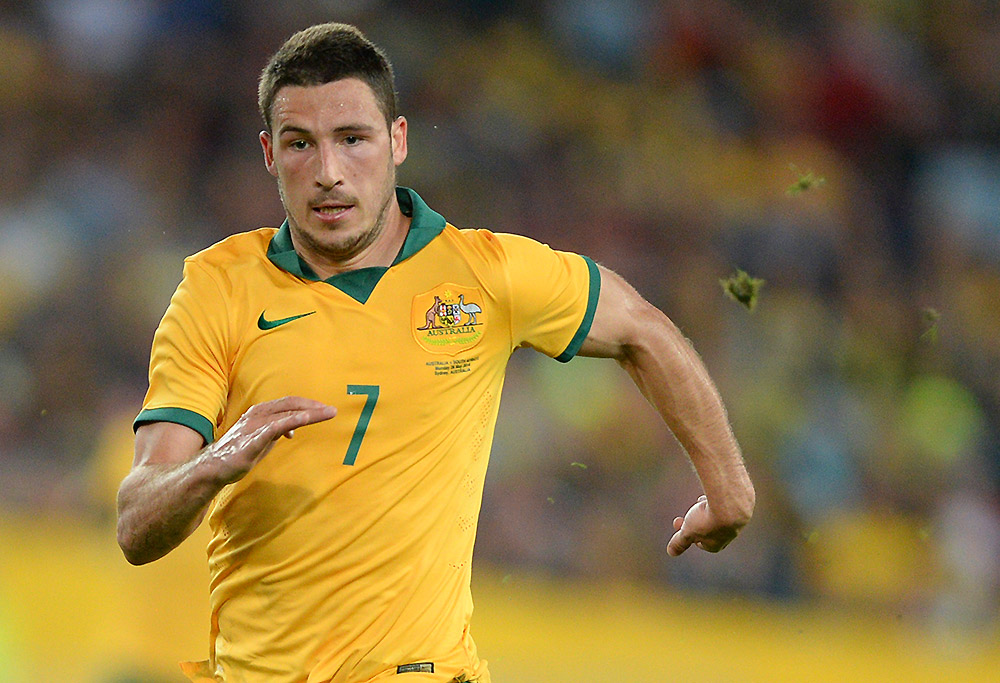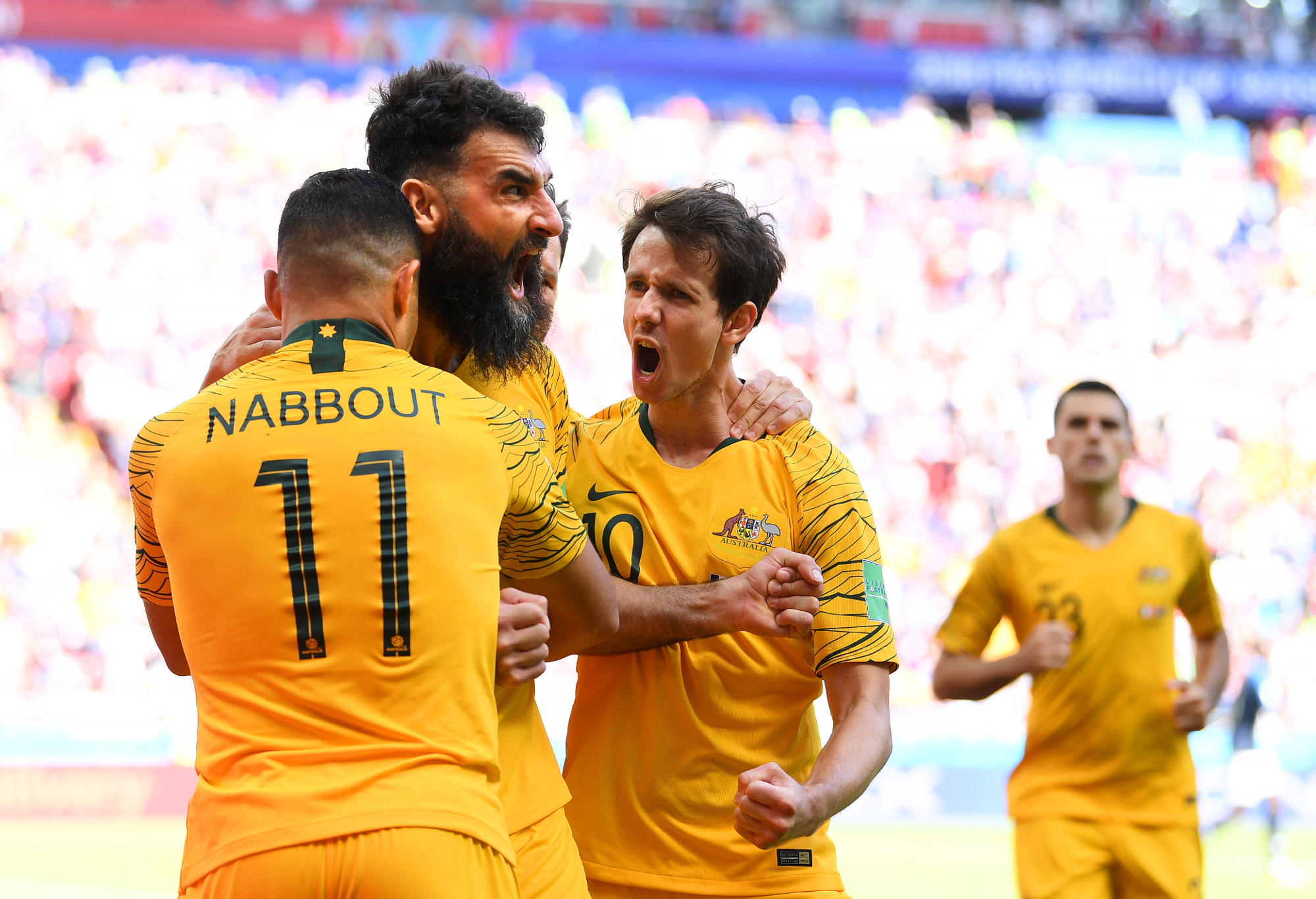WATCH: Chelsea forward escapes red for 'nasty' studs-up moment, somehow doesn't even cop a yellow
Arsenal fans were outraged that Chelsea striker Nicolas Jackson got off scot-free for this challenge in the Gunners' 5-0 win.

After the disappointment of the Peru game, Craig Foster strongly critiqued Australian football.
His critique focused on the identity of the Socceroos and how we play football – and that although our World Cup campaign showed various Australian qualities, it did not show the Australian attacking mentality as we did not ‘give it to’ Peru from the outset in a must win game.
Craig also questioned if we as Australians are content with gallant losses – and that if we are not, the Australian footballing public need to make it clear that it is not acceptable.
I was entranced with Fozzy’s speech, it was from a place of a frustrated lover of Australian football, speaking from the heart and confused about our future direction. Even though Jose ‘The Special One’ Mourinho said Australia would progress to the second round, the reality is that Australia finishing the bottom of the group was not a surprise.
That is why I think that the FFA pulled off a masterstroke by having Bert van Marwijk coach the team to the World Cup after Ange Postecoglou and have Graham Arnold take over after. It enabled Arnold the buffer of not being criticised for a potential poor performance in the World Cup – he is now given a clean slate to embed the Australian brand of football going forward.
In saying that, I do agree with the Fozzy’s general sentiment – Australians want to see football where our team is not afraid of any team and attacks them.
I want to see Australia dominate Asia and have an expectation that we push into the second round and finals of the World Cup, challenging and beating the world’s best on its day.
To do this though, we need to rethink how we develop strikers and make sure that they are an active scoring threat in games. We all know that the Socceroos struggled to create and capitalise in our forward third in Russia, but the extent that it occurred was bordering on ridiculous.
One statistic illustrates how much we struggled – only one shot was made by a striker. In the Peru game you may say? Nope – across all three games.
Tim Cahill was the only striker to take a shot, Andrew Nabbout and Tom Juric did not take one shot. Not one.
I am by no means an expert in football but I do not think it is likely a team will score many goals and win many games if the striker does not fire off a shot. In my definition of a striker, it is not a right or left forward (aka Matt Leckie or Robbie Kruse) but the front man who takes a central forward position.

Matt Leckie (AAP Image/Lukas Coch)
People may argue that this is symptomatic of Van Marwijk not showing belief in Australia’s ability to attack, which I would agree with but it misses the fact that Australia has struggled to develop strikers that fit into our style of game, back to and including our 2006 golden generation.
This might be because our strength has always been our midfield depth – our golden generation had a plethora of quality midfielders and wingers such as Harry Kewell, Cahill, Mark Bresciano, Jason Culina, Vince Grella, Brett Emerton, Scott Chipperfield and Mile Sterjovski.
Our 2018 squad was of a similar mould with Rogic, Aaron Mooy, Mile Jedinak, Leckie, Kruse and Dan Arzani. Australia seems to be capable of developing quality midfielders (and a plethora of quality goalkeepers – that is another issue though) and develops game plans that rely on midfielders to score goals.
This detracts from our strikers, which in my opinion in the last decade have primarily had a role of facilitating and holding up the ball, rather than being a persistent goal scoring threat.
Counter-intuitively, when these strikers do not score as many goals as the team would like, we drop them and move our wingers and midfielders into striking roles – Kewell and Cahill being the obvious examples.
From our golden generation til now, we have only had one striker that appeared to consistently score goals – Josh ‘Jesus’ Kennedy – who scored 17 times in 38 games.
Take Cahill off the top of Australian goal scoring charts (as I consider him an attacking midfielder, turn striker out of necessity) and the pure strikers that have scored consistently are few and far between. Archie Thompson is third on the all-time list scoring 28 goals, but only scored eight goals against non-Oceania teams (with three goals coming against Guam – in a 9-0 win).
[latest_videos_strip category=”football” name=”Football”]
John Aloisi is fourth with 27 goals, but with 15 goals coming against Oceania opposition. The next best strikers during this period is Mark Viduka with 11 and Tomi Juric with 8.
Compare this to Australian midfielders/wingers, Jedinak and Brett Emerton have both scored 20 goals, Kewell 17, Bresciano with 13, Chipperfield with 12, Josip Skoko and Brett Holman with nine, Sterjovski and Wilkshire with eight each. Of the current crop, Leckie has scored eight goals, Rogic has seven goals and Mooy and Luongo five goals in internationals.
People may argue that the striking talent has simply not been there. Without getting into the chicken or the egg debate, from the golden generation onwards, even when we have had some successful strikers at European club level, such as Mark Viduka in the Premier League and McDonald at Celtic – a mix of their own personal struggles and a lack of a clear striking role impacted their capability to score goals for country.
This paints a bleak post-Cahill picture of our attacking options going forward, although there are potentially promising signs.
While I think that it is important to heed Fozzy’s words and really re-invent and implement the Australian way of playing football, we really need to re-think the role of a striker in the Australian brand of football.
Australia needs to develop a clear understanding of how we want our strikers to play and identify and develop our upcoming talent to be capable of being a consistent goal scoring threat.
It does not necessarily matter that these strikers play in the big European leagues (although that would be a huge bonus) but that they can play in an Australian style of play and continue to be an attacking threat in every game.
Juric, Nabbout and Maclaren are young enough to develop into consistent goal scoring threats for Australia but we have to have faith, patience and a game plan that encourages them to score, not just facilitate.

Mile Jedinak of Australia (Photo by Laurence Griffiths/Getty Images)
What I would like to see is an aggressive, physical striker, who is a strong header but has that killer instinct to get into dangerous positions and score big goals – a player that is relentless and never stops attacking.
This basically is what Cahill has been for Australia since he became our leading striker. That is why I think it is imperative that we keep Cahill in some sort of advisory capacity to help develop these players to have that killer instinct.
Arnold now has the opportunity to really shape the style of Australian football and I think there is no better place to start than re-thinking the role of striker because it is unlikely that Australia will get to where it wants to be as a footballing nation, if it does not have strikers than score goals.